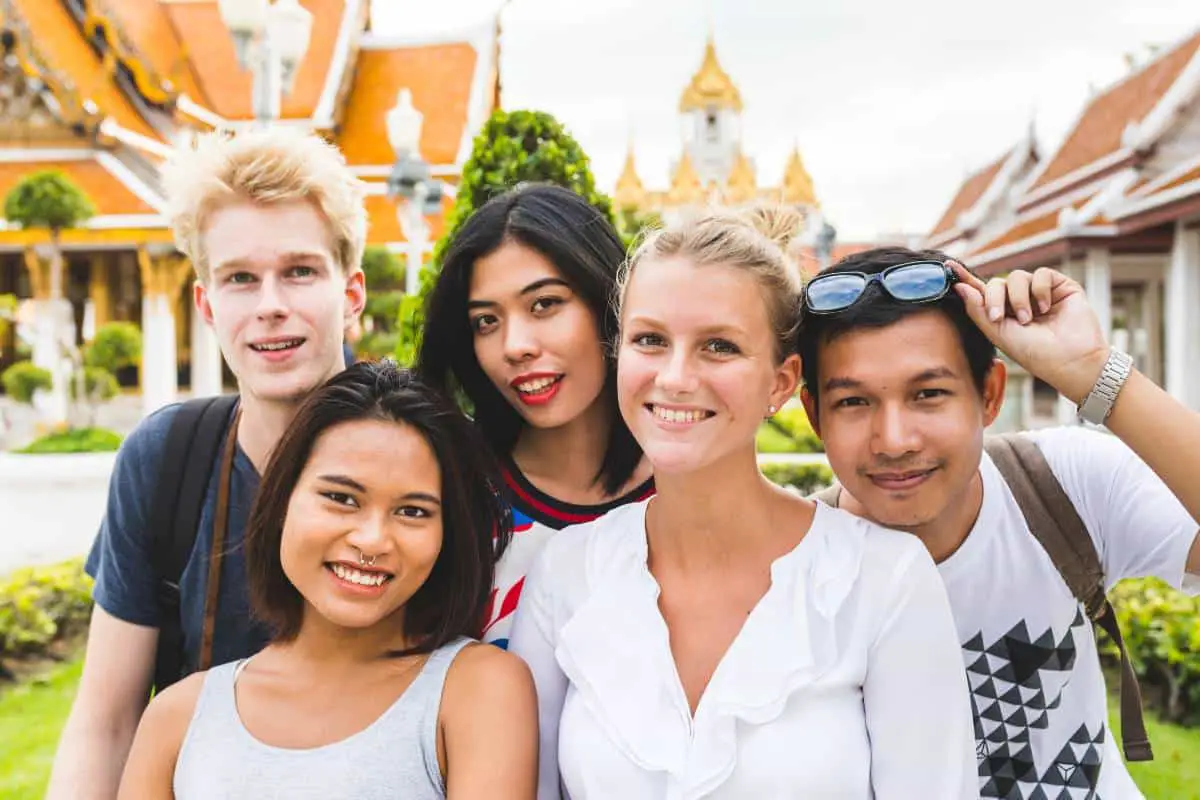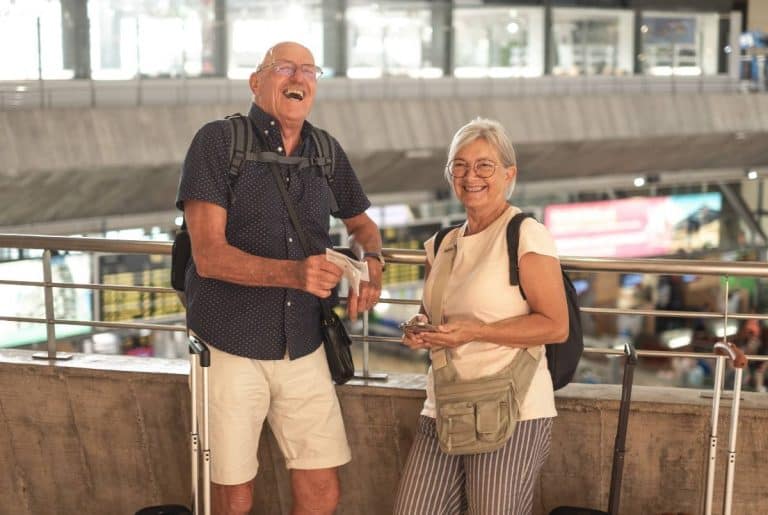Thailand’s Two-Tier Pricing System: What Expats Need to Know
As long-term residents of Thailand, we’ve navigated the complexities of living in this beautiful country for over a decade. One aspect that continues to generate discussion among expatriates is Thailand’s two-tier pricing system – the practice of charging foreigners higher prices than locals for various goods and services. While this system may initially seem unfair to newcomers, understanding its nuances is essential for anyone looking to make Thailand their home.
Key Takeaways
- Dual pricing in Thailand is legal and institutionalized, with historical roots aimed at making cultural attractions accessible to lower-income Thai citizens.
- Learning basic Thai, understanding cultural norms, and politely negotiating can often reduce price disparities, especially in informal settings.
- Long-term expatriates typically develop a nuanced perspective, balancing occasional higher costs against Thailand’s overall value and quality of life.
The Reality of Dual Pricing in Thailand
What is Two-Tier Pricing?
Two-tier pricing, also known as dual pricing, is the practice where businesses and attractions charge different rates based on nationality or residency status. In Thailand, this typically means that Thai nationals pay less than foreign visitors or expatriates for identical services or entrance fees.
This system is most noticeable at tourist attractions, national parks, historical sites, and some government services. For example, a Thai citizen might pay 40 baht to enter a national park, while foreign visitors are charged 400 baht – a tenfold increase.
Historical Context and Cultural Perspectives
The dual pricing system didn’t emerge overnight. It has historical and economic roots dating back several decades. Initially implemented to make cultural attractions more accessible to Thai citizens while generating additional revenue from tourism, the system has become institutionalized over time.
From a Thai perspective, this practice often makes sense. The average Thai salary remains significantly lower than what many Western expatriates earn. Cultural attractions are part of Thailand’s heritage, and the government wants to ensure its citizens can afford to experience them.
Common Areas Where Expats Encounter Dual Pricing
Tourist Attractions and National Parks
The most visible and official form of dual pricing occurs at Thailand’s many stunning attractions. At places like the Grand Palace in Bangkok, Ayutthaya Historical Park, or Doi Inthanon National Park, price differentials are substantial and openly displayed.
What many newcomers don’t realize is that these price differences are actually codified in official regulations, with separate rate schedules for Thai nationals and foreigners. This isn’t a case of impromptu discrimination but rather an established policy.
Transportation Services
While less formalized, transportation services often implement variations of dual pricing. From tuk-tuks to taxi services, foreigners frequently find themselves quoted higher initial prices than locals. Unlike official dual pricing, however, these situations typically involve negotiation.
We’ve learned over the years that speaking basic Thai, knowing standard rates, and politely negotiating can often reduce these price discrepancies significantly.
Medical Services and Healthcare
A lesser-known area where pricing differences exist is within Thailand’s healthcare system. Many private hospitals maintain different price schedules for Thai and non-Thai patients. These differences might apply to consultation fees, room rates, or medication costs.
While Thailand remains a top medical tourism destination due to its excellent quality-to-cost ratio compared to Western countries, expatriates should be aware that they may pay premium rates compared to locals.
Legal Status and Justifications
Is Dual Pricing Legal?
Yes, Thailand’s dual pricing system is entirely legal under Thai law. Government institutions have official policies allowing for different fee structures based on nationality. The Tourism Authority of Thailand and other government bodies justify this practice as a form of subsidy for Thai citizens.
This system also exists, albeit in different forms, in other countries. Many nations offer discounts or special rates to their citizens for cultural institutions or national services.
Economic and Social Arguments
Supporters of dual pricing point to several justifications:
- Income disparity between average Thai citizens and foreign visitors
- The principle that Thais pay taxes that support these institutions, while tourists do not
- Cultural heritage preservation costs that are partially funded through foreign visitor fees
- Market economics – charging what different segments of the market are willing to pay
Critics, meanwhile, argue that the system:
- Creates an unwelcoming atmosphere for long-term expatriates who pay taxes in Thailand
- Could potentially harm tourism if visitors feel unfairly treated
- Reinforces divisions between Thais and foreigners
- May not be transparently implemented in all cases
Navigating Dual Pricing as an Expat
Resident Status and Alternatives
As long-term residents, we’ve discovered several ways to mitigate the impact of dual pricing:
Having a Thai work permit, marriage visa, or permanent residency sometimes qualifies expatriates for Thai pricing at certain attractions. Carrying proper identification is essential when attempting to access these benefits.
Some attractions offer discounts for foreigners who can prove long-term residency status. A Thai driver’s license, work permit, or long-term visa in your passport can sometimes help negotiate lower rates, especially at locations outside major tourist areas.
Learning Thai Language and Cultural Norms
In our experience, speaking Thai – even at a basic level – dramatically changes how you’re perceived and treated. Making the effort to communicate in Thai often results in being charged local prices at informal establishments like markets or small restaurants.
Understanding and respecting Thai cultural norms also helps build rapport with local vendors and service providers, who may be more inclined to offer you standard Thai rates.
When and How to Negotiate
Negotiation is a normal part of daily life in Thailand, but understanding when and how to negotiate is crucial. At official government sites with posted dual pricing, negotiation is typically not possible. However, in markets, with transportation services, or at smaller attractions, polite negotiation is expected.
We’ve found that approaching negotiations with a smile, speaking some Thai, and maintaining a respectful attitude yields the best results. Remember that even when you successfully negotiate, the price you pay may still be somewhat higher than what a local would pay – and that’s okay.

Ethical Considerations and Perspectives
Supporting Local Communities
While it’s natural to feel frustrated about paying more, we’ve come to see certain forms of dual pricing as a way to support the local economy. The additional revenue from foreign visitors helps maintain cultural sites, supports conservation efforts in national parks, and provides livelihoods for many Thais in the tourism sector.
When viewed through this lens, the higher prices can be seen as a form of contribution to preserving the very attractions we enjoy as expatriates.
Balancing Fairness and Cultural Respect
Living in Thailand requires finding a personal balance between advocating for fair treatment and respecting local customs and economic realities. We’ve learned to choose our battles wisely – accepting official dual pricing at major attractions while politely negotiating in informal settings.
Long-term expatriates often develop a nuanced perspective: understanding the system’s rationale while working within it to establish relationships that transcend strict pricing categories.
The Future of Dual Pricing in Thailand
Changing Attitudes
There are signs that attitudes toward dual pricing may be evolving. Some tourism professionals and business owners have begun advocating for more equitable pricing structures, particularly for long-term residents and expatriates who contribute to the Thai economy.
Several tourist destinations have experimented with unified pricing structures, finding that transparency and fairness can actually increase overall visitor satisfaction and spending.
Digital Transformation and Transparency
The digital transformation of Thailand’s tourism sector may eventually impact dual pricing practices. Online booking platforms typically display a single price, making traditional dual pricing more difficult to implement.
Increased price transparency through review sites and social media has also placed pressure on businesses to justify significant price disparities.
FAQs
What is Thailand’s two-tier pricing system?
Thailand’s two-tier pricing system is a pricing strategy where products or services, particularly in the hospitality sector, are offered at different prices for local Thai people and foreign tourists, often referred to as “farang.” This pricing model is designed to cater to different demographics and boost revenue in the tourism industry.
What is Thailand’s two-tier pricing system?
Thailand’s two-tier pricing system is a pricing strategy where products or services, particularly in the hospitality sector, are offered at different prices for local Thai people and foreign tourists, often referred to as “farang.” This pricing model is designed to cater to different demographics and boost revenue in the tourism industry.
Are there any specific accommodations where the two-tier pricing model is applied?
Yes, many hotels and resorts in Thailand use the two-tier pricing model. For example, a hotel may offer a lower rate for Thai residents while charging foreign tourists a higher rate for the same room and services.
What are the benefits of the two-tier pricing system for the Thai government?
The Thai government supports the two-tier pricing system as it helps boost tourism revenue and enables local businesses to thrive. By catering to both Thai and foreign travelers, the government aims to enhance the country’s hospitality sector and ensure sustainable growth in tourism.
How can travelers get the best deal while visiting Thailand?
Travelers can get the best deal by researching accommodation options in advance, comparing prices, and being aware of the two-tier pricing system. Booking directly with hotels or looking for promotions designed for foreign tourists can also help secure better rates.
Conclusion
After years of living in Thailand, we’ve come to accept dual pricing as part of the complex tapestry that makes up expatriate life here. Rather than focusing solely on price differences, we’ve found greater satisfaction in appreciating the incredible value Thailand still offers, even with occasional premium charges for foreigners.
For those considering moving to Thailand, Here at BLA, understanding the dual pricing system helps set realistic expectations. The frustration many newcomers feel typically diminishes over time as they develop local connections, learn the language, and gain a deeper understanding of Thai society.
Ultimately, Thailand’s affordability, stunning natural beauty, rich culture, and the warmth of its people far outweigh the occasional extra charges we encounter as expatriates. By approaching dual pricing with cultural sensitivity and perspective, we’ve found it becomes just another aspect of the fascinating cross-cultural experience that is expatriate life in the Land of Smiles.
We hope our insights help you navigate this aspect of Thai life with greater confidence and cultural awareness. While the system isn’t perfect, understanding its context allows you to focus on the countless rewards that come with making Thailand your home.






